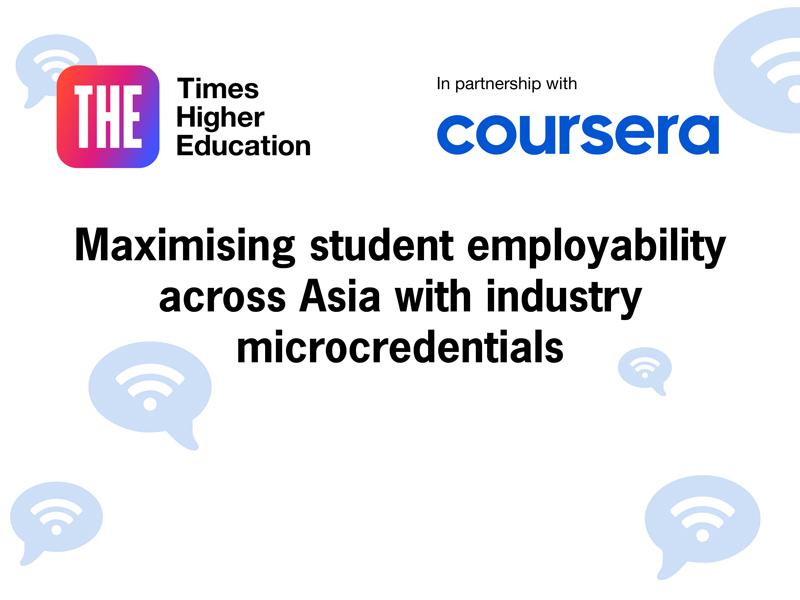
Let’s give learners on all levels the skills for a green future
We all know that transitioning to a green economy will involve changes in the ways we live and work. We need to align on how we perceive sustainability, innovate in sustainable technologies and business models, and manage the interactions between the environment, economy and society. These initiatives require our workforce to be equipped with sustainability-related knowledge and skill sets, which haven’t been covered properly in our education system. It’s up to us to incorporate them for the students of today. But this leaves us with a huge backlog of educational work that we now need to deliver to the current workforce, who weren’t taught these skills as students.
To address the needs of the green economy, higher education institutions are working to develop and update their curricula. Programmes related to sustainability, such as environmental engineering, are not new, but universities are now joining the trend of centring curricula around the concept of sustainable development. These programmes focus on critical sustainability issues including climate change and biodiversity, as highlighted by the UN’s SDGs (United Nations’ Sustainable Development Goals).
What are the challenges?
Environmental sustainability education is in a state of flux, due to scientific findings, policy development, societal conversation and economic transitions taking place. All these factors are leading to employers creating new green jobs and upgrading existing roles. Curriculum developers of this field are figuring out what to teach – and to whom.
The strategies
The curricula of environmental sustainability education programmes do not have a common general structure, unlike well-established disciplines such as mechanical engineering. Such a structure may be emerging, but it’s useful to implement a few strategies to help to determine what to teach.
- Achieving SDG 4.7 by matching sustainability learning outcomes to subject-specific curricula: a guide
- The dos and don’ts of creating a large-scale sustainability module
- How to select and monitor climate adaptations for universities
Curriculum developers will also be mapping contents to the intended learner profiles. This adds a further challenge, as there is a wide variation in learning requirements from the workforce, given that sustainability concerns cut across all job roles and sectors. Here are three ways we can curate a curriculum to meet the needs of different learners.
The horizontal-vertical matrix approach
There are horizontal sustainability-related knowledge and skill sets that are required across all sectors, including methodologies of decarbonisation and sustainability reporting. Horizontal contents can be packaged for delivery across different degree programmes and sectors.
At the Singapore Institute of Technology (SIT), we’ve offered a set of these horizontal topics to learners of different degree programmes. They also form the core of the minor in environmental sustainability that students majoring in disciplines such as electrical power engineering and digital supply chain can take on. Upon completing the horizontal sustainability courses, learners will be able to apply the learning in their respective vertical courses and later sectorial practices. This way, we can reinforce the fundamentals learned and help ensure the curriculum’s relevance to the respective domains.

The multi-level approach
Within each area of an environmental sustainability curriculum, such as decarbonisation, we can then organise the content around the level of tasks and job roles in the industry.
Let’s continue with the example of decarbonisation. Curriculum contents for the operational level, including data collection and carbon accounting, can be separately delivered from strategic level methodologies such as decarbonisation road-mapping. Categorising learning contents in this way will allow specific content to be delivered to learners of different job roles.
As an illustration, SIT’s sustainability curriculum is multi-levelled, with a 101-level introduction to sustainability course for all undergraduates, a specialist certification as the next level training for operational and managerial tasks and a set of higher-level courses to cover strategic and leadership tasks.
The microcredential approach
Courses developed with a microcredential approach support agile delivery and learning. A unit of curriculum content (eg, carbon accounting) can be delivered to learners of various job levels from different domains. Learners could be undergraduates who need the skill set for a project or in-employment staff who need it at work.
The learning may be just-in-time, when the student requires the knowledge in the workplace, and a single course, or “once-off”. It could also be continuous, with an interest in stacking credits towards a certificate or degree. SIT uses the microcredential approach in delivering education programmes, which allows its sustainability education to support the industry’s green transition more effectively and to prepare graduates for the future economy.
These three strategies can be combined to curate and deliver a curriculum that caters to learners of different job functions and domains. Doing so will facilitate effective teaching and learning through applications of horizontal sustainability know-hows on domain-specific vertical problems. The structure will also serve to scaffold contents from fundamental to the leadership and strategic levels.
A microcredential format will be more palatable to working professionals and help alleviate the sustainability education backlog. With the horizontal-vertical matrix and multi-level tiering in developing a curriculum structure, the rapidly expanding body of knowledge in environmental sustainability can be better organised and more accurately delivered through educational programmes, paving the way for a greener future.
Ethan Chong Yih Tng is head of sustainability (education and research) at the Singapore Institute of Technology.
If you would like advice and insight from academics and university staff delivered direct to your inbox each week, sign up for the Campus newsletter.




